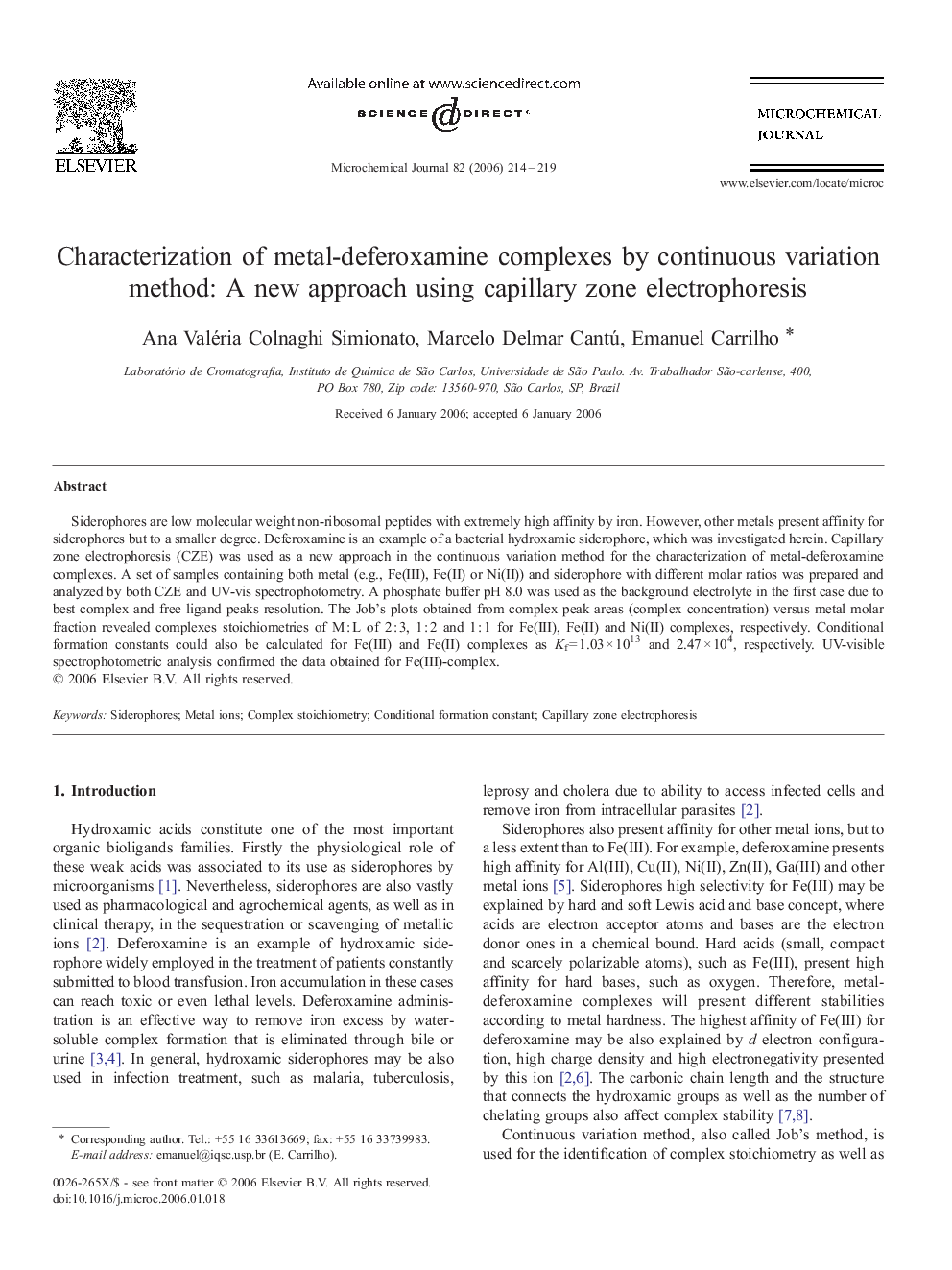| Article ID | Journal | Published Year | Pages | File Type |
|---|---|---|---|---|
| 1228619 | Microchemical Journal | 2006 | 6 Pages |
Siderophores are low molecular weight non-ribosomal peptides with extremely high affinity by iron. However, other metals present affinity for siderophores but to a smaller degree. Deferoxamine is an example of a bacterial hydroxamic siderophore, which was investigated herein. Capillary zone electrophoresis (CZE) was used as a new approach in the continuous variation method for the characterization of metal-deferoxamine complexes. A set of samples containing both metal (e.g., Fe(III), Fe(II) or Ni(II)) and siderophore with different molar ratios was prepared and analyzed by both CZE and UV-vis spectrophotometry. A phosphate buffer pH 8.0 was used as the background electrolyte in the first case due to best complex and free ligand peaks resolution. The Job's plots obtained from complex peak areas (complex concentration) versus metal molar fraction revealed complexes stoichiometries of M : L of 2 : 3, 1 : 2 and 1 : 1 for Fe(III), Fe(II) and Ni(II) complexes, respectively. Conditional formation constants could also be calculated for Fe(III) and Fe(II) complexes as Kf = 1.03 × 1013 and 2.47 × 104, respectively. UV-visible spectrophotometric analysis confirmed the data obtained for Fe(III)-complex.
